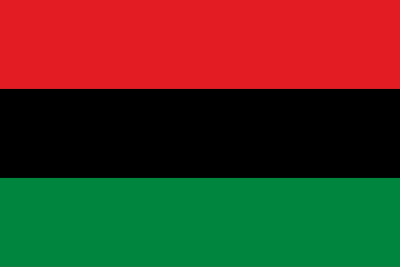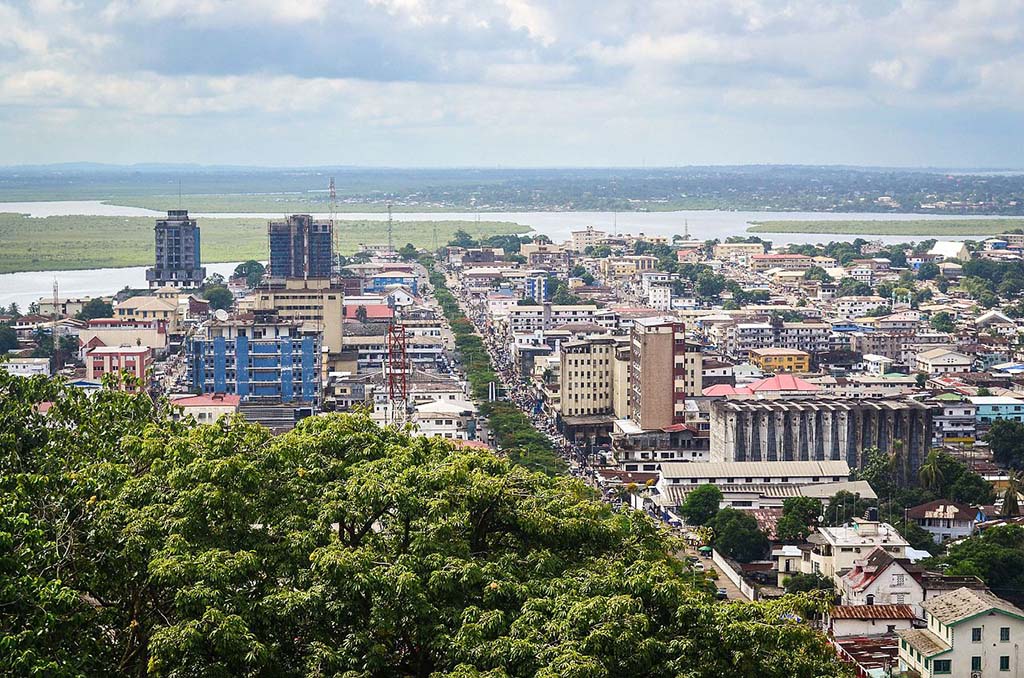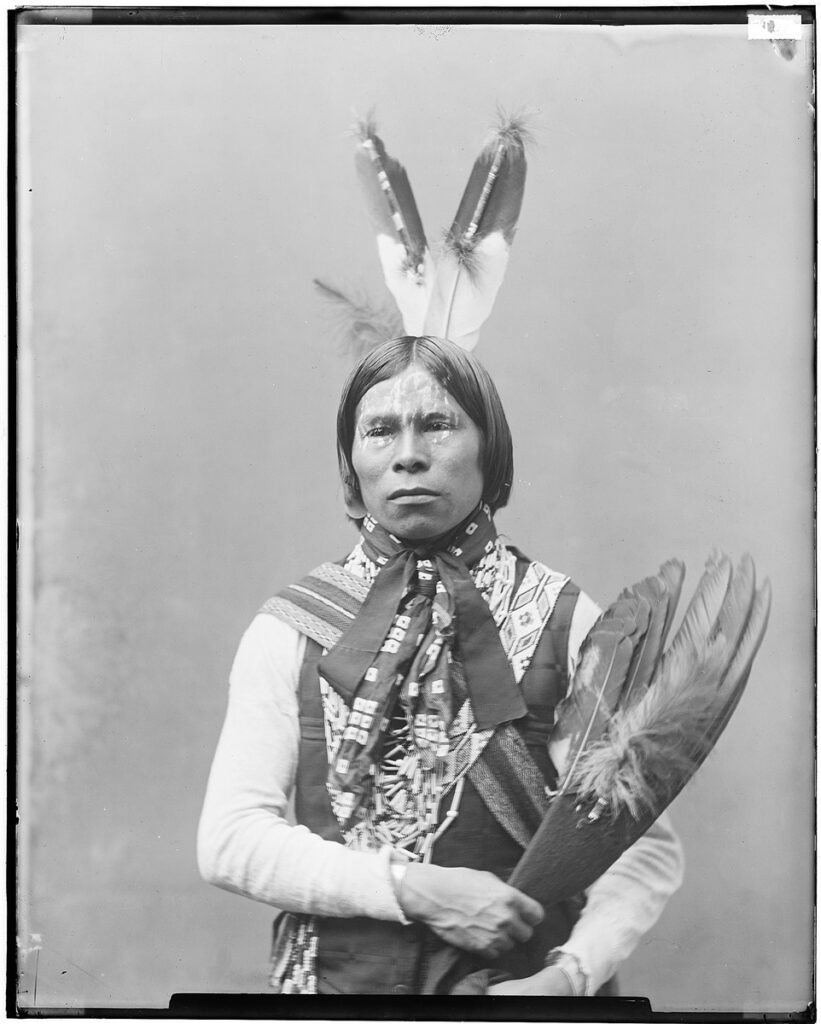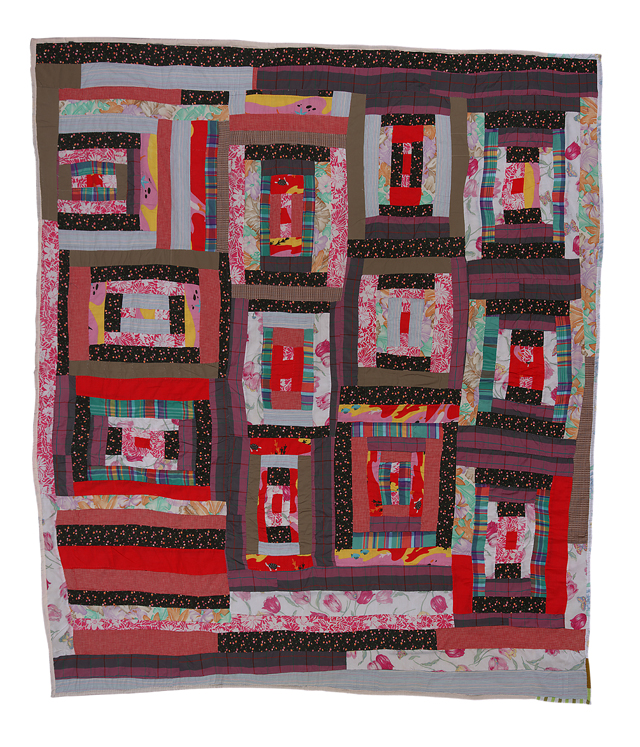Package 5
Explore the references playwright Jarrett McCreary and designer Sara Outing used in creating the fifth package in A BREATH FOR US.
To return to the main resource page, click here.
Song of the week: Aretha Franklin, “I Say A Little Prayer,” 1968


The Pan-African Flag
The Kimunmoto flag, as depicted on the stamp, is inspired by the red, black, and green Pan-African flag. It also incorporates a flame – “Kimunmoto” is a combination of the Swahili words for “divine” and “fire.”
The Pan-African flag was adopted on August 13, 1920 by the the Universal Negro Improvement Association and African Communities League (UNIA-ACL) as part of their Declaration of the Rights of the Negro Peoples of the World. The UNIA was founded and led by Marcus Garvey on the principle of uniting in solidarity all people of African descent, both on the continent and in the diaspora. The goal was to collectively empower Black people, rather than expecting or waiting for the white power structure to bestow rights and freedoms. The red, black, and green flag was created to provide a symbol to unite under as a nation, and has inspired multiple African countries’ flags as well as symbols within the Black Power and liberation movements in America.
Learn More:
LISTEN: The symbolism of the Pan-African flag
More on the Pan-African flag
Marcus Garvey: Biography, businesses, recordings
Liberia
As a safe haven created for Black Americans to rebuild, A BREATH FOR US’s Kimunmoto bears some resemblance in spirit to Liberia. The West African country was founded as a repatriation destination for formerly enslaved American and Caribbean people and free Black people, and for many years Liberia was offered as a possible home for members of the African diaspora. The effort was started by the American Colonization Society, made up of both abolitionists and segregationists. It was a U.S. colony or territory from 1821 until 1847, when it declared independence and became what is now Africa’s oldest republic.
The concept of repatriating to Liberia was immediately controversial within the African-American community, and the country’s history is fraught; two civil wars in recent decades have battered it. But the last 15 years have been peaceful, and in 2005, Liberia elected Ellen Johnson Sirleaf as president, making her the first elected female head of state in Africa.
Learn more:
Nina Simone’s three years in Liberia
Library of Congress exhibition on founding and early days of Liberia
Timeline, essays, film clips, and more


The Kiikaapoi (Kickapoo) People
Gerald, this letter’s author, lives in Kimunmoto on Manitoa Street. Manitoa is the Kickapoo (Kiikaapoi) word for snake, indicating that Kimunmoto was founded within the traditional territory of the Kickapoo people. Chicago is located in the ancestral lands of several tribes – one of them is the Kickapoo.
The Kickapoo are an Algonquin-language people whose name means “stands here and there,” possible referencing their migratory patterns. The Kickapoo fought alongside Shawnee leader Tecumseh in Tecumseh’s War and on the side of the British in the War of 1812, hoping to expel American settlers. The tribe originated south of the Great Lakes, but were pushed west by the US government several times. Today there are federally recognized tribes in Kansas, Oklahoma, and Texas, and there is also a smaller band of Kickapoo members in Mexico and the southwest US.
(Pictured: Babe Shkit, Kickapoo chief from Oklahoma, c. 1900)
Learn More:
Indigenous Tribes of Chicago
Cecelia Pensoneau Blanchard, the first female chairman of the Kickapoo Tribe
Kansas Kickapoo Tribe’s official website
Gee's Bend/Boykin
Tashina lives in Boykin, Alabama – known to Ruthy and Josie as Gee’s Bend. This is an isolated majority-Black community of about 300 people, surrounded on three sides by the Alabama River. It was founded as a plantation, and many current residents are descended from the enslaved people brought to that plantation.
Gee’s Bend is accessible via a road to the west and a ferry to the east. In 1962 the state eliminated ferry service to keep the residents from registering to vote at the county seat across the river; ferry service wasn’t restored until 2006. Three weeks before Bloody Sunday in 1965, Dr. Martin Luther King Jr. visited Gee’s Bend and spoke to the residents, encouraging them to vote, saying “I come over here to Gee’s Bend to tell you: You are somebody.”
Gee’s Bend is also famous for the extraordinary quilts made there. Since the early 20th century, the women of Gee’s Bend have been making distinctive and highly personal quilts characterized by lively color and improvisational, almost abstract style. In the last 20 years, they have been displayed in art museums all over the country, and in 2003, the living quilters – about 50 women – founded the Gee’s Bend Quilters Collective as a cooperative to sell and market their quilts. The pictured quilt is Housetop, Log Cabin Variation by Lucy Mingo.
Learn more:
Explore the quilts and quilters
Learn more about the women behind the quilts
WATCH: MLK and the Gee’s Bend ferry
